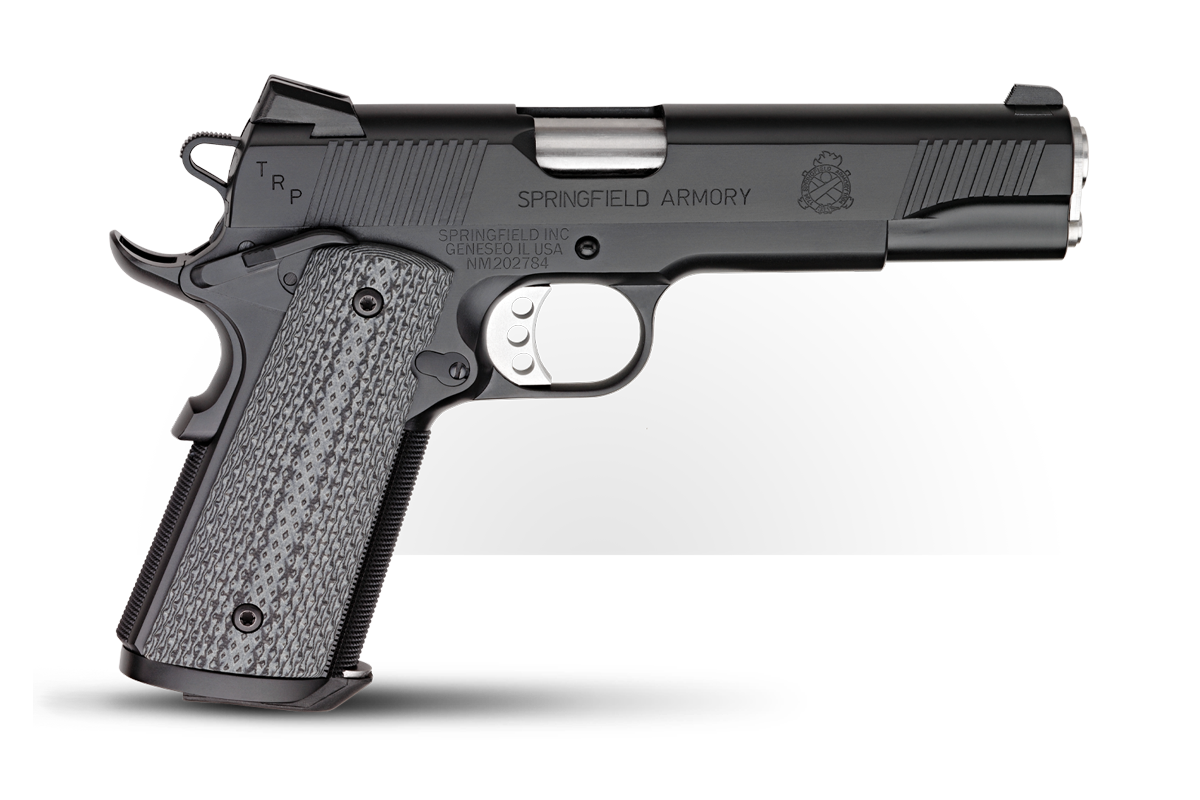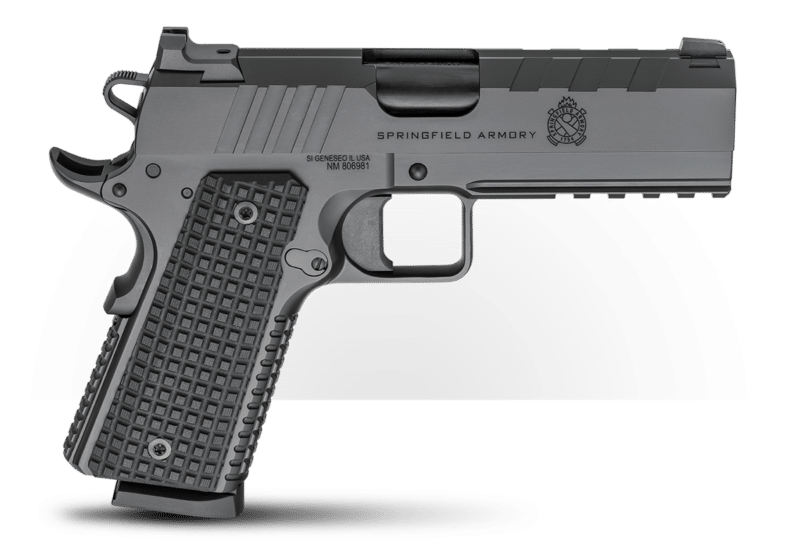Ayoob: Do You Make These 1911 Mistakes?
August 5th, 2021
7 minute read
Versatility, dependable function, and high hit potential are among the reasons why so many of us cling to a 110-year-old pistol design. However, we have a couple of generations of gun owners who didn’t grow up with that particular pistol — the 1911 — and can benefit from the experiences with it of those who have gone before. Let’s look at a few “hacks” that make life with the 1911 a little bit easier and, even, safer.
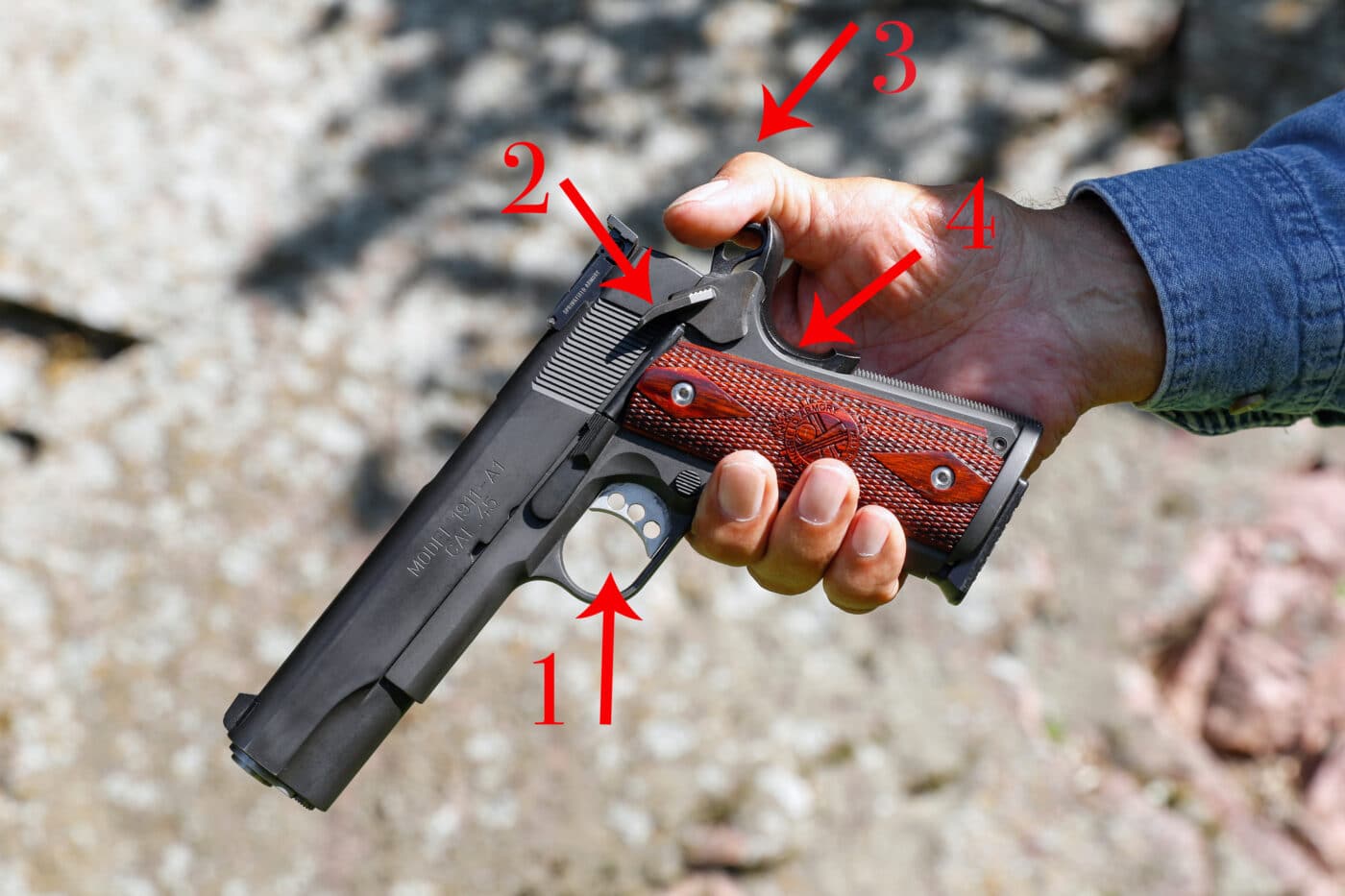
Chamber Checks
Safety and peace of mind alike are reasons pistol owners frequently check the firing chamber. Is there a torpedo in the launch tube for when the gun might have to be deployed instantly in a defensive emergency? When we want it to be unloaded, is it completely unloaded?
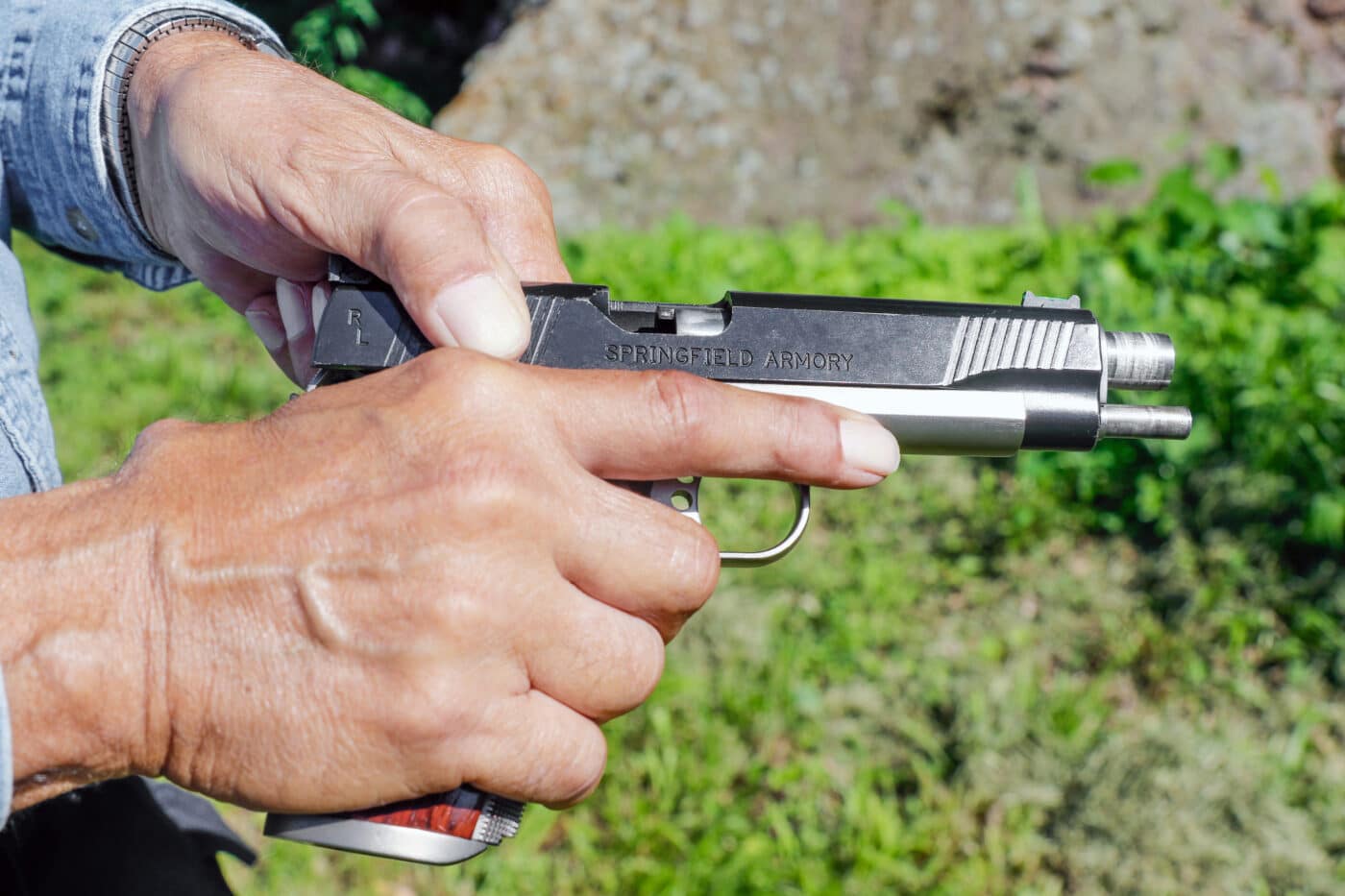
First, a jargon alert: the term “press-check” is often misapplied. When we draw the slide back to expose the chamber area, we’re normally “pulling” or “retracting” rather than “pressing” anything. The “press-check” is one specific technique, aptly named, which goes back to the first half of the 20th century. In a true press check, the firing hand is holding the pistol normally, and the thumb of the support hand is hooked behind the front edge of the trigger guard while the support hand index finger presses against the bottom front of the slide, pushing the slide to the rear.
This, of course, puts that “weak hand” index finger directly under the gun muzzle! When done with a loaded pistol, the danger is obvious. Particularly if the thumb inside the trigger guard is thick or gloved, it is dangerously close to the trigger, perhaps even already in contact with it. Remember, the thumb safety has to be in the “fire” position for the 1911’s slide to move, and the firm grasp of the firing hand has already depressed the grip safety.
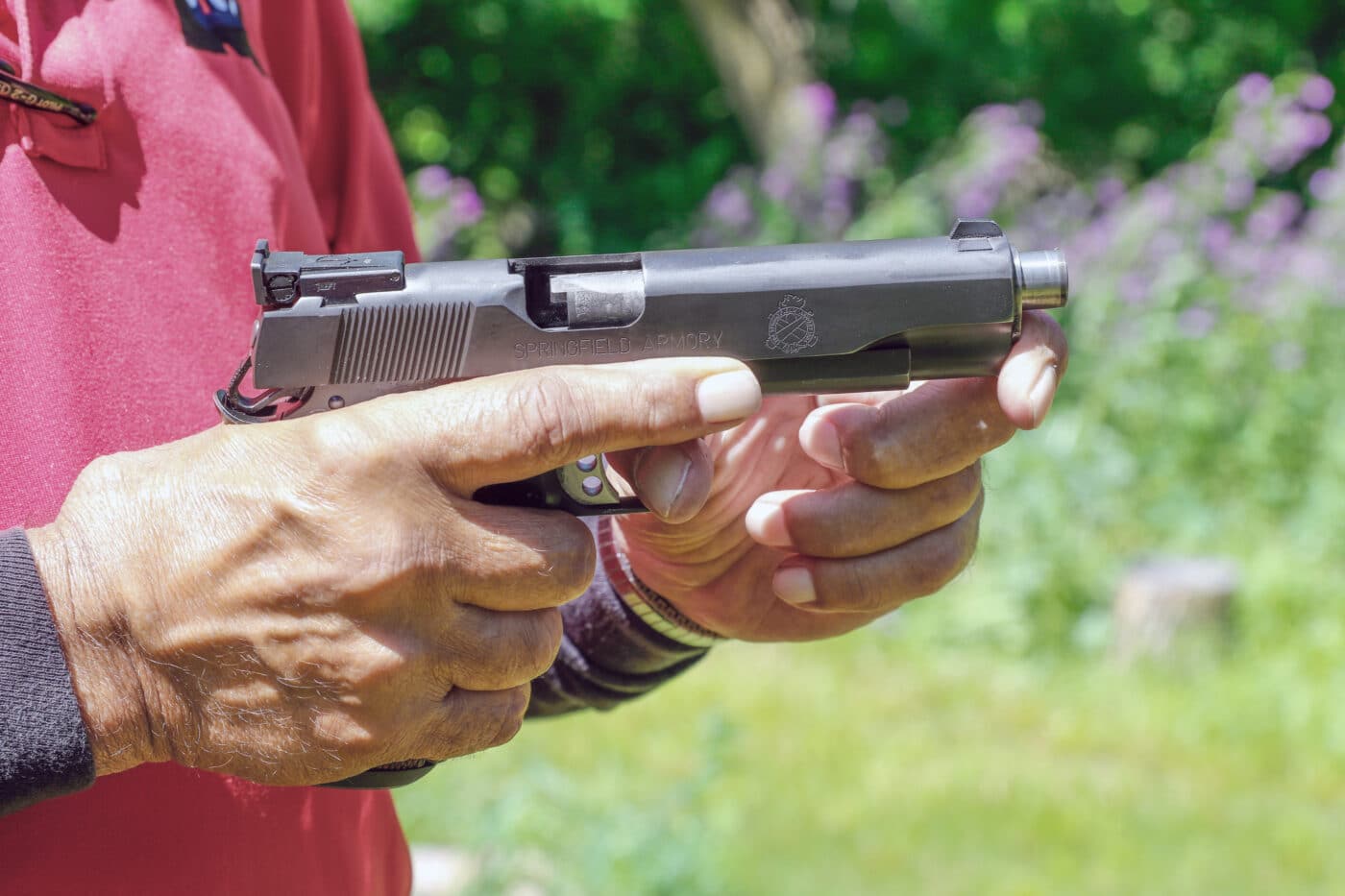
If the operator is bumped or startled or that front index finger simply slips, the momentum of the slide coming forward under spring pressure can snap the front of the gun slightly downward. Now the trigger is driven against that thumb, and…BANG: the gun discharges with the index finger now in direct contact with the muzzle.
I knew one Master shooter who made this mistake and blew off the last digit of his left index finger with a .45 slug. At muzzle contact the burning, expanding gases are particularly destructive; it’s not just the bullet that does the damage.
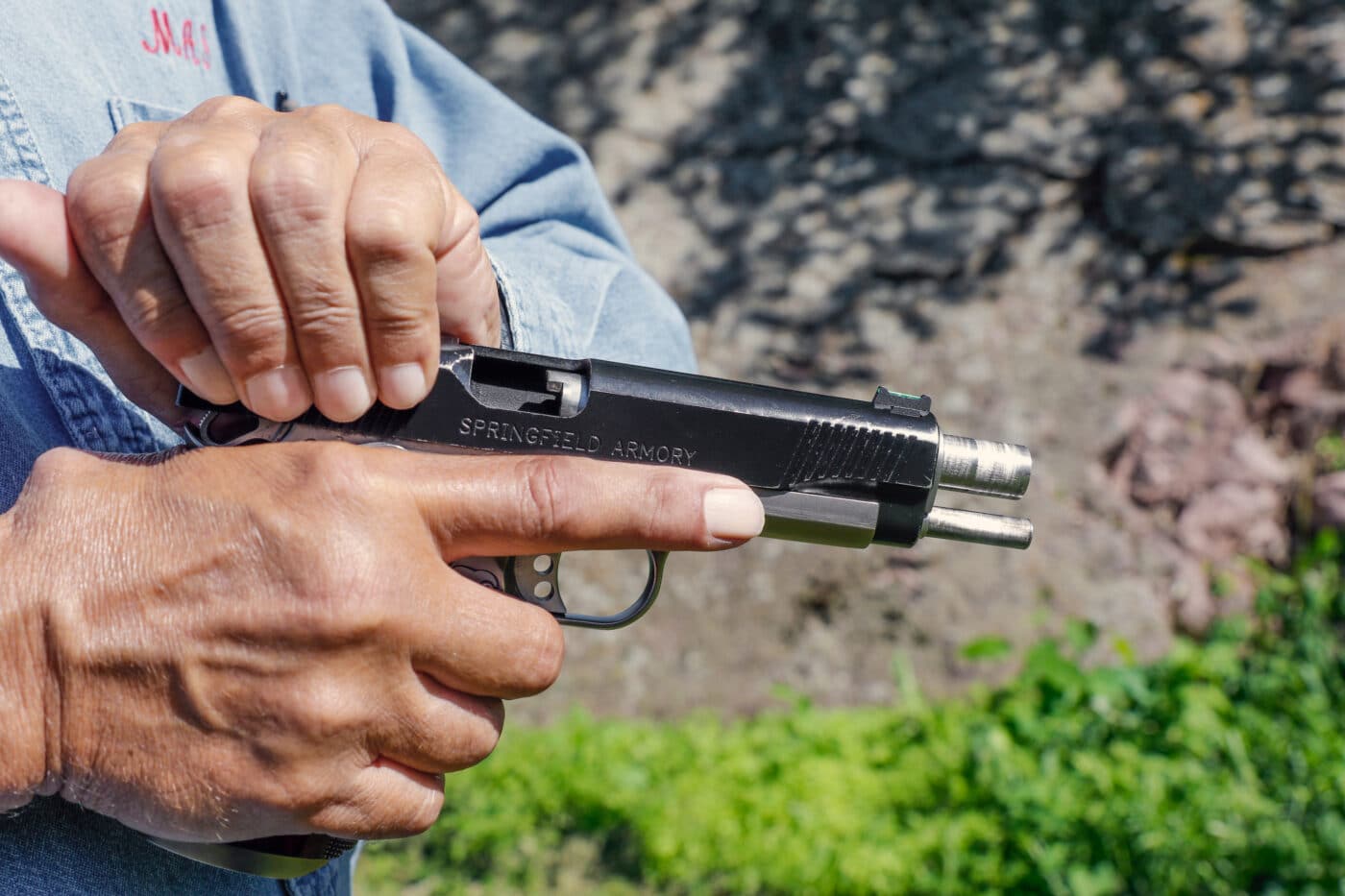
It is wise to keep the fingers away from the business end of the gun. It’s popular today to put grasping grooves on the front as well as the rear of the slide. Your writer is not a big fan of this. It became popular when large optics started being placed on target pistols, often frame-mounted in such a way as to make the slide’s rear grasping grooves difficult to reach.
Front grooves are not needed on a pistol without a frame-attached scope. (If you have carry optics attached to the slide, the optic itself in a solid mount becomes a very handy “slide-racking” surface.) For a few decades now I’ve been the handgun columnist for GUNS magazine, and one of those decades ago one column began with, “I am holding my friend’s little finger. Unfortunately, my friend is standing on the other side of the room.”
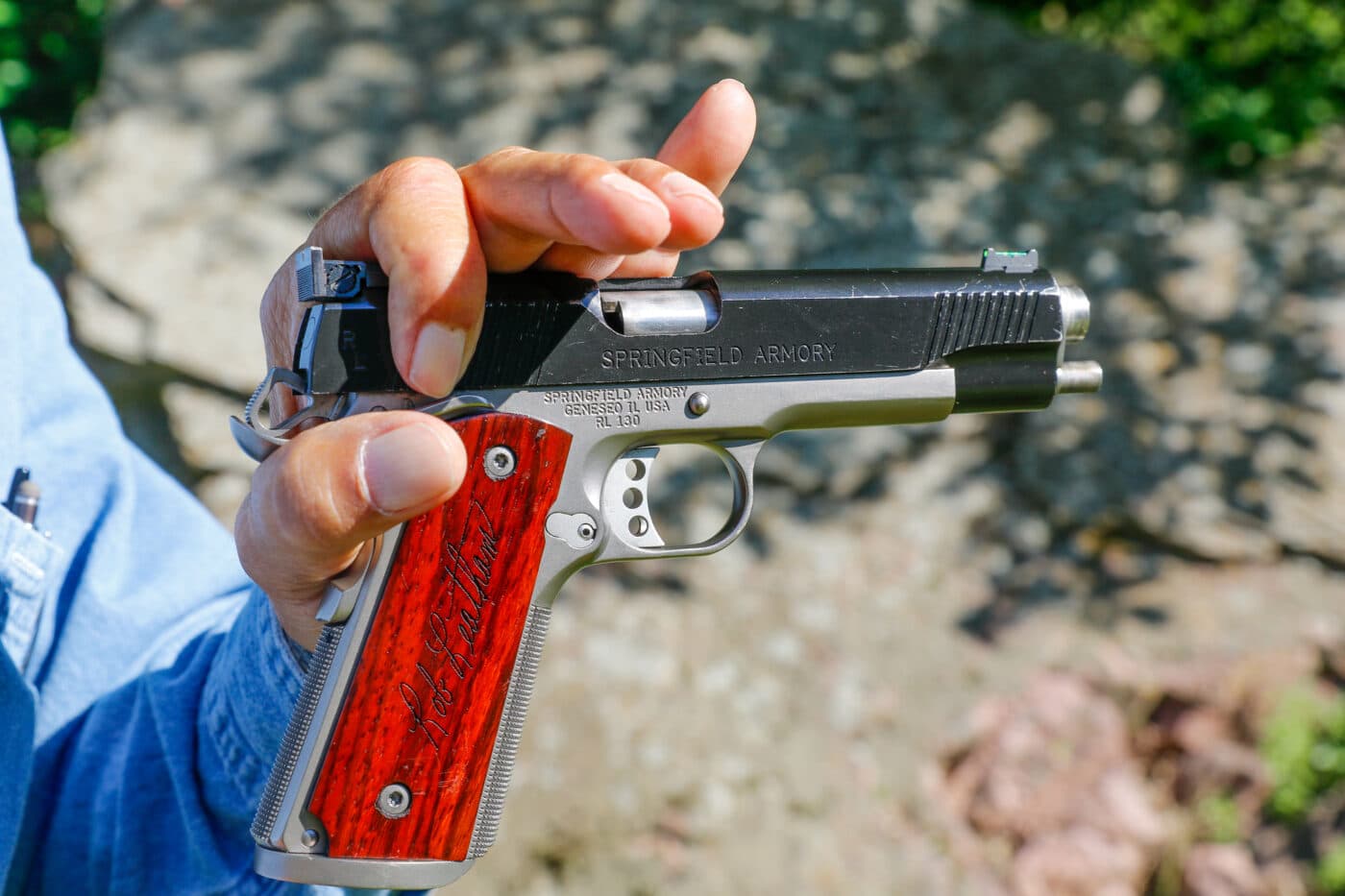
My buddy had been working his 1911 .45’s slide from the front, and his trigger finger was apparently in the guard. A live round in the chamber had been overlooked. When he worked the slide from the front, BANG: the pinky finger ceased to be attached to the rest of his hand. He kept the severed digit in a jar of Formalin as a warning to others.
There is a reason John Moses Browning put those grasping grooves on the BACK of the 1911’s slide. Please pay homage to the designer and work the slide from there.
Thumb and Thumb Safety
It is far more common to have to draw a defensive handgun than to have to shoot a living thing with it. The 1911 is properly carried Condition One, cocked and locked with a round in the chamber, ready for action. Most of us learned early to have it in hand with the manual safety’s lever still up in the “safe” position, firing hand thumb poised above the lever and ready to swipe it down into the “fire” position at the same time when the index finger entered the trigger guard when it came time to shoot. After sixty years with 1911s, that is still my own ingrained habit.
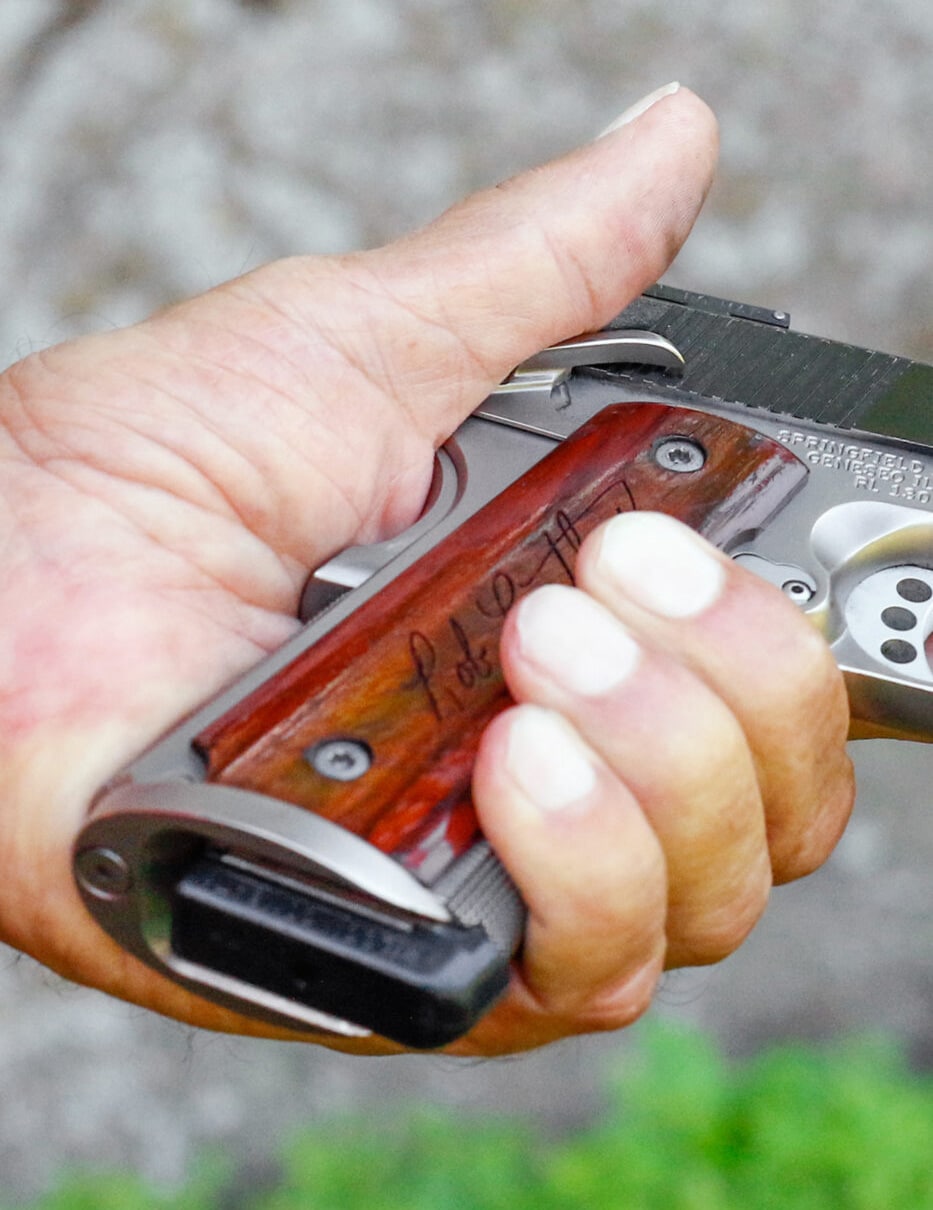
However, that’s not the only way. Along about 40 years ago, then-Major Winston Dill of the Athens, Georgia Police Department showed me another option: the thumb of the firing hand pushing up on the safety, holding it in the “on safe” position. One of the real “thinking person’s gun forums” is pistol-forum.com, founded by the late Todd Louis Green and home to a great many knowledgeable professionals today. In a recent discussion thread there, a great many professionals endorsed this particular “ready grasp” of the 1911.
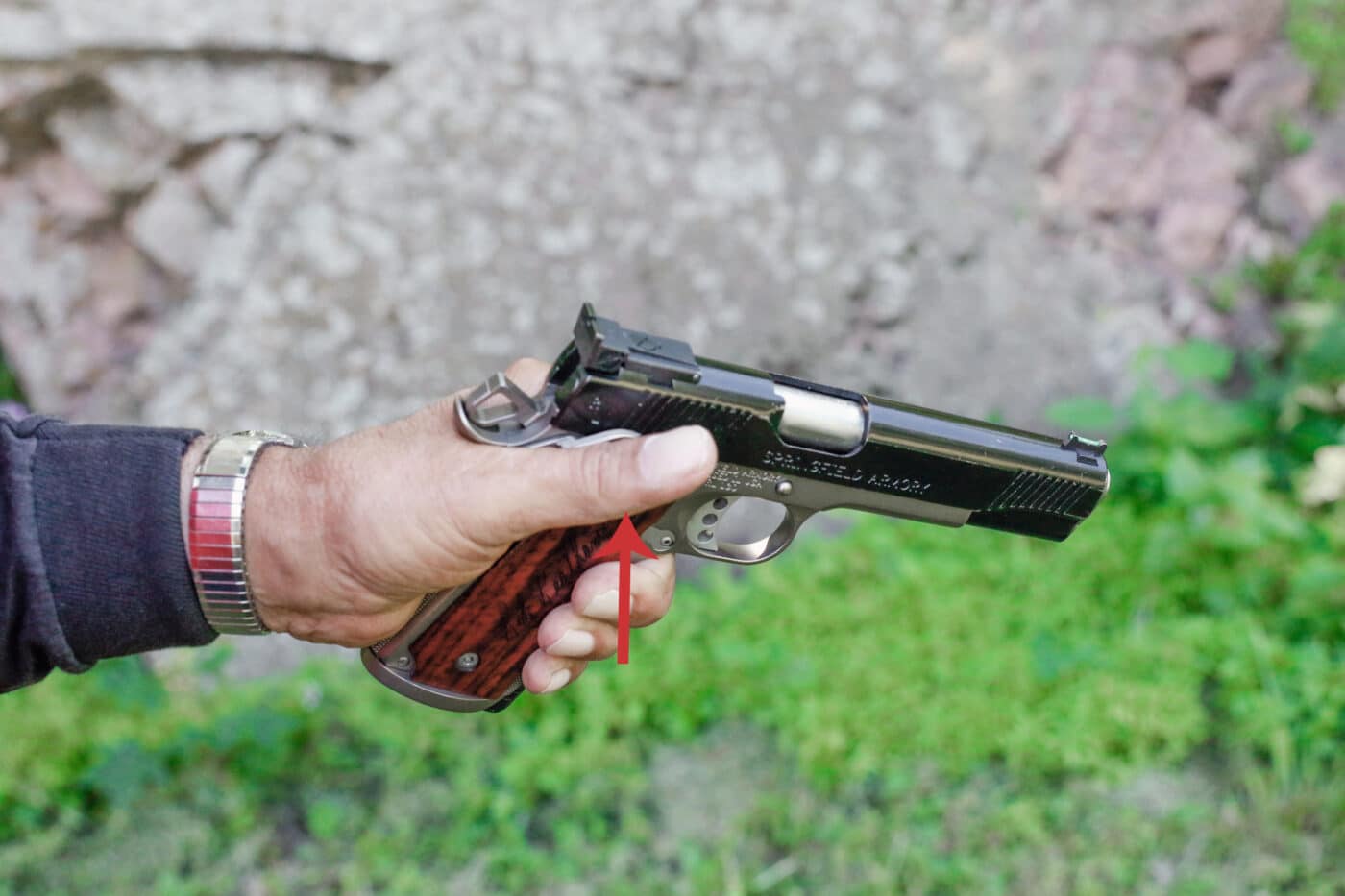
Each approach has pros and cons. The thumb pushing upward holding the pistol on safe requires a “one-two” movement, up and then down, for the thumb to put the gun into “fire” mode. The thumb riding on the safety requires just one downward stroke and is therefore slightly faster when firing is necessary.
On the other hand, a startle response that causes fingers and thumb to tighten can inadvertently off-safe the 1911 if the thumb was already riding atop the lever. This won’t be true if the thumb is under the lever. Resting atop the lever obviously puts the thumb higher, and the higher the opposing thumb, the less force the other fingers can exert holding the pistol.
It would be worth any 1911 owner’s time to try both methods, starting with extensive dry-fire, and then pick one of those techniques and stay with it.
Ready Trigger Finger Placement
We all know the trigger finger on a drawn gun should not enter the trigger guard unless and until it is time to shoot. Personally, I would narrow that down to “the finger should only be inside the trigger guard when we are in the very act of intentionally discharging the weapon.”
The commonly seen straight finger resting on the front of the trigger guard is, in my experience, manifestly unsafe: it holds the finger taut, and a startle response that activates the flexor muscles can snap it straight back into the trigger with enough force to cause an unintended discharge.
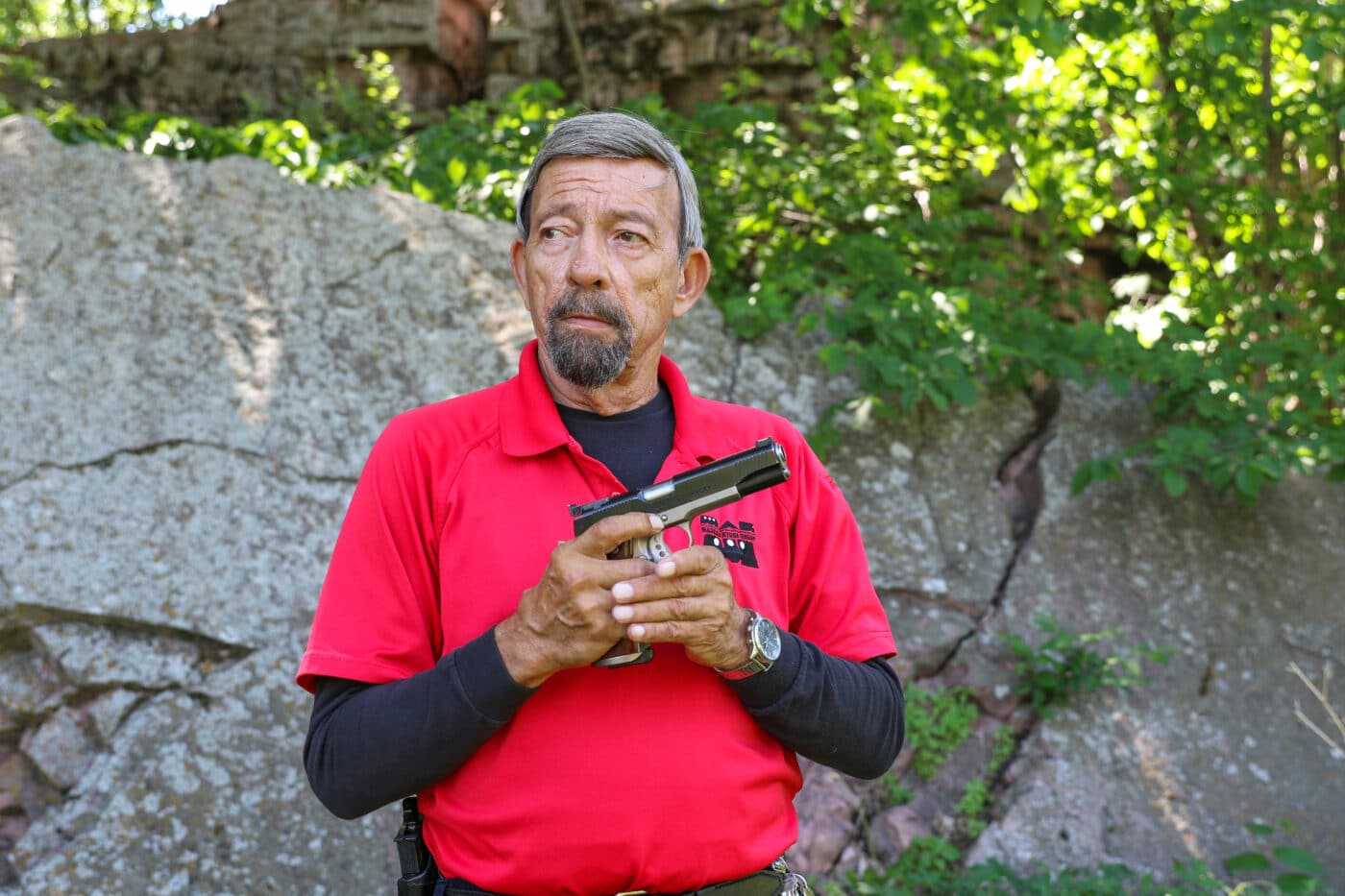
Finger straight along the frame or above it, or even the fingertip touching the barrel/chamber area, are sometimes recommended. I’ve found that in most hands, the finger touching the chamber is awkward and weakens the hold, and in any case, can burn the finger during extended firing drills. Thus, the most common “ready” grasp is the finger straight along the frame.
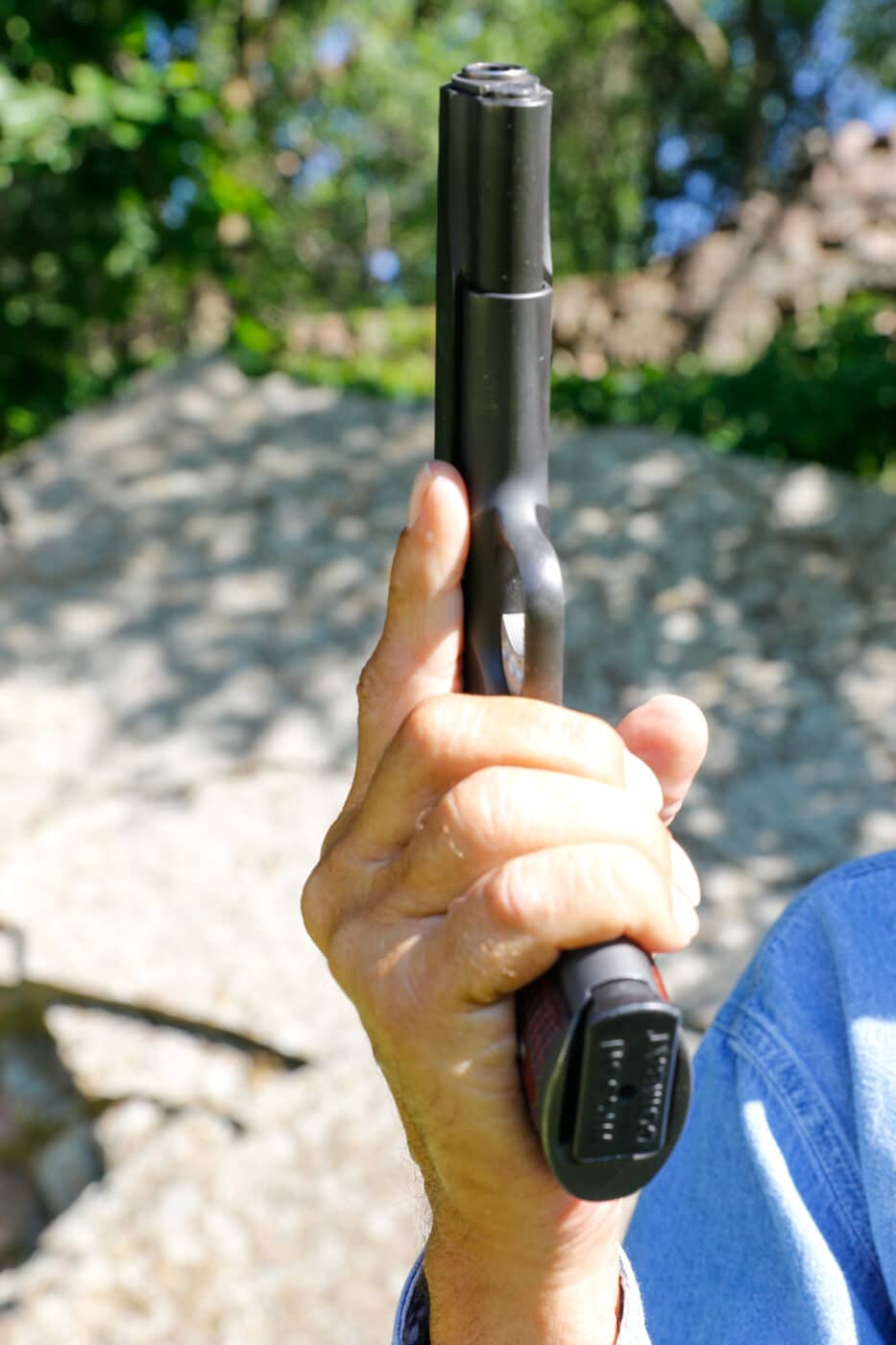
With most handguns, and with the 1911 held in the left hand, this won’t in any way disable the gun. However, with a right-handed shooter and a 1911, every now and then a straight finger pushes hard enough against the protruding stud of the slide stop lever to move it a little bit left. Now, when the first shot is fired, the pistol can lock up. To clear that malfunction, one goes to the armorer’s grasp (see photo), retracts the slide just to the point used in takedown and reassembly, and pushes the slide stop back in to get the gun operational again. We have to do this a few times a year with students’ 1911s on the firing line. It is not something we’d care to have to do when under fire.
That’s one reason why, back in the 1970s, I learned to flex my right index finger when holding a 1911 and index the fingernail just behind that stud of the slide stop lever. Now it can’t move the part. I like to hold ANY handgun with the trigger finger in this position anyway because it’s more solid for weapon retention, won’t snag on the front edge of the trigger guard when I do need to shoot, and can snap instantly across the trigger ready to fire when the moment comes.
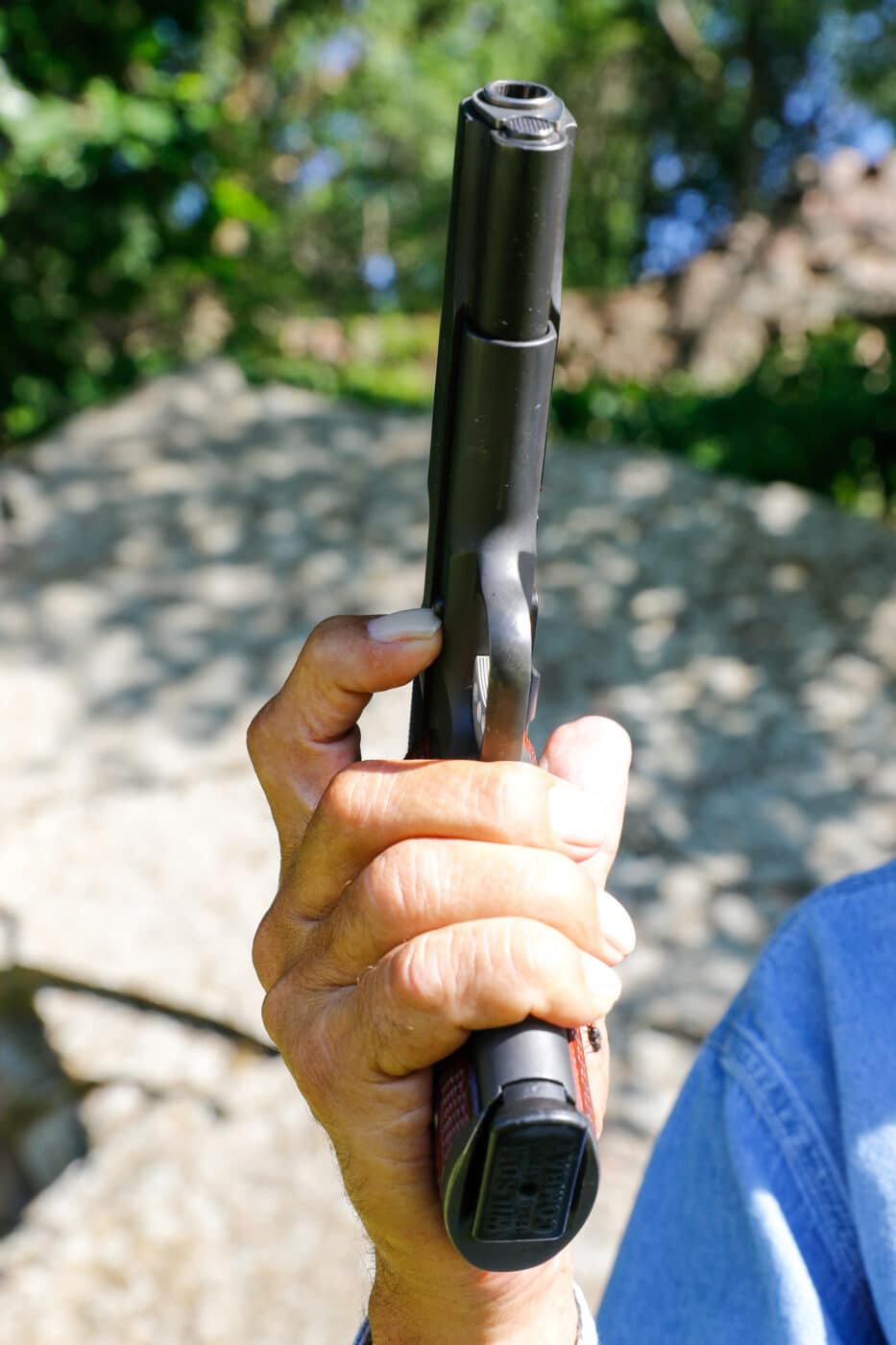
By the way, that armorer’s grasp is another method I’ve seen used for chamber checking. I don’t like it for that: it weakens the grasp unnecessarily and is somewhat fumble-prone. The armorer’s grasp is most useful, as its name implies, for field-stripping and reassembling the 1911. It is useful for clearing that one type of malfunction mentioned, the slide stop that has started to work its way out of the pistol.
Conclusion
Many general pistolcraft techniques apply directly to the 1911, but John Moses Browning’s classic design does have its own idiosyncrasies. The above suggestions are offered in hopes of making “life with the 1911” a little bit easier and safer.
Editor’s Note: Please be sure to check out The Armory Life Forum, where you can comment about our daily articles, as well as just talk guns and gear. Click the “Go To Forum Thread” link below to jump in and discuss this article and much more!
Join the Discussion
Featured in this article
Continue Reading
Did you enjoy this article?

 807
807




